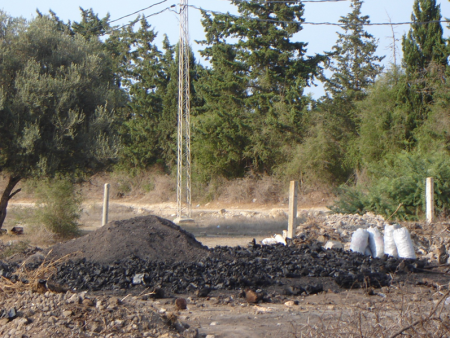
Objective:
In rural areas of Tunisia, the average wood consumption per household and per year is between 1.8 and 5.9 tones. The highest consumption was noted in the forest regions of Sejnane, Boussalem and Jendouba. Results show that traditional bread baking represents 60 to 70% of the percentage of wood consumed in households. With a view to satisfying the increasingly growing needs for firewood and charcoal in rural areas, we have initiated a selection research program oriented towards more intensive wood production including wood that can be used for energy purposes. In this work, we propose to compare the energy performance of 11 species of Eucalyptus.
Context:
The biomass produced by the Eucalyptus trees is used in the bioenergy field. The experimental material consists of wood taken from 11 species of Eucalyptus planted in the arboretum of Choucha. These species are E citriodora, E maculata, E paniculata, E astringens, E pileata, E robusta, E striaticalyx, E botryoides, E alba, E rudis and E sideroxylon. To evaluate the energy performances of the studied species, various parameters were selected: the higher calorific value (HCV), the degree of humidity and the basal density of the wood, the rates of gases released during combustion.
Contacts:
Mohamed Larbi Khouja : khouja.larbi15@gmail.com, www.inrgref.agrinet.tn
Elaieb Mohamed Taher: ayeb2002@yahoo.fr, www.inrgref.agrinet.tn
Ibtissem Taghouti : ibtissem.taghouti@gmail.com, www.inrgref.agrinet.tn
Amor Mlaouhi : mlaouhi.amor@iresa.agrinet.tn
Further information:
Mlaouhi A., Mlaouhi S. et Depeyre D., 1999 – Evolution de la consommation de bois de feu en Tunisie au cours de la période 1997 – 2030, Revue de l’INAT , vol 14 N° 2, 41 –56.
Mlaouhi A., Mazghouni M., Kharroubi H., Hssaïri M., Khouaja A., et Depeyre D., 2002 – Etude des caractéristiques énergétiques et environnementales du bois de quelques espèces forestières tunisiennes. Ann. de l’INRGREF, 5, 165-175.
Mlaouhi A., Khouja ML., Mazghouni M., Kharroubi H., Toumi L. et Depeyre D., 2004 – Etude des performances de six types de combustible dans le système de cuisson de pain traditionnel en Tunisie (Tabouna). Ann. de l’INRGREF, 6, 127-139.
Mlaouhi A., Khouja M.L., Mazghouni M.., Kharroubi H., Toumi L. et Depeyre D., 2005 - Estimation de la consommation énergétique en combustible ligneux des ménages ruraux dans les régions du nord de la Tunisie ; Annales de l’INRGREF, 7, Numéro spécial, 167-176.
Rezgui M., 2003 - Evaluation énergétique du combustible en milieu rurale en Tunisie. Mémoire de fin d’études de l’ISP Tabarka, 61p.